Motorsports
NASCAR’s Diversity and Inclusion program proving its value
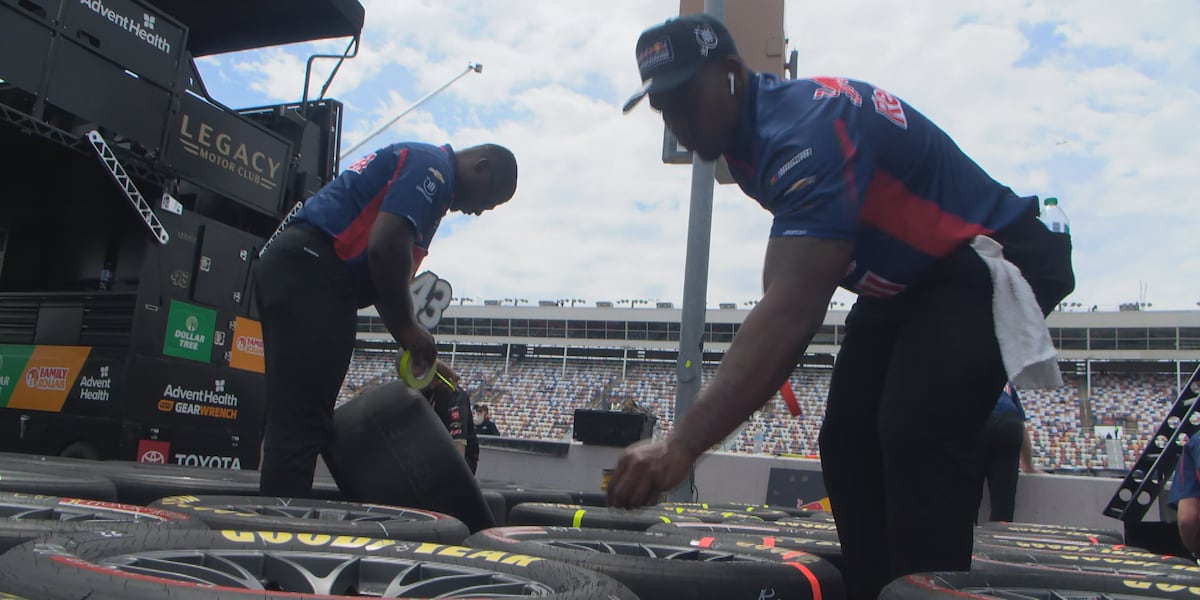
CONCORD, N.C. (WBTV) – On the heels of the Coca-Cola 600, we caught up with only the second all black pit crew in NASCAR’s history.
Now we’re talking about NASCAR’s diversity program that has introduced the sport to people of color from around the country.
As the fans and race teams roll out of Charlotte Motor Speedway, NASCAR’s Diversity and Inclusion program is sticking around.
The point of it all— according to NASCAR’s website, to create an inclusive environment in all facets, including the racetrack, the stands, and the pit.
“I didn’t watch it as a kid, but getting to get into it from the pit road aspect made me a fan immediately,” said Kenyatta “Kap” Houston who is from Mooresville.
Growing up 20 miles north of the speedway he never considered a career in racing, it was football that captured his interest.
“Coming from a football background, the competition, the camaraderie with the teammates,” Houston said. “It also still employed being in a career and a professional sport like NASCAR.”
It’s an opportunity Kap may have missed had it not been for the NASCAR Diversity and Inclusion program.
“Without the diversity program, internally, the hiring pool would be a little different,” Houston said. “Externally, somebody that looks like myself wouldn’t have been exposed to that opportunity of pitting race cars.”
The ripple effect of Kap’s decision is influencing another athlete, former Seattle Seahawk Jordan Ferguson.
“I want to be an inspiration to those that are younger than me who may be in the same situation as myself, never knowing they’re going to join NASCAR,” Ferguson said. “To come and have this opportunity to take care of your family and have a great life as well.”
As the sport drives for diversity, there are additional programs to develop pit crew members, paid internships, and even a track to grow the next craftsman truck and stock car drivers.
Houston and Ferguson both spoke about how they’re excited to be a part of history but also look forward to the day when African Americans are regulars in NASCAR.
Copyright 2025 WBTV. All rights reserved.
Motorsports
John Force Racing Names Jordan Vandergriff Driver of Cornwell Tools Funny Car
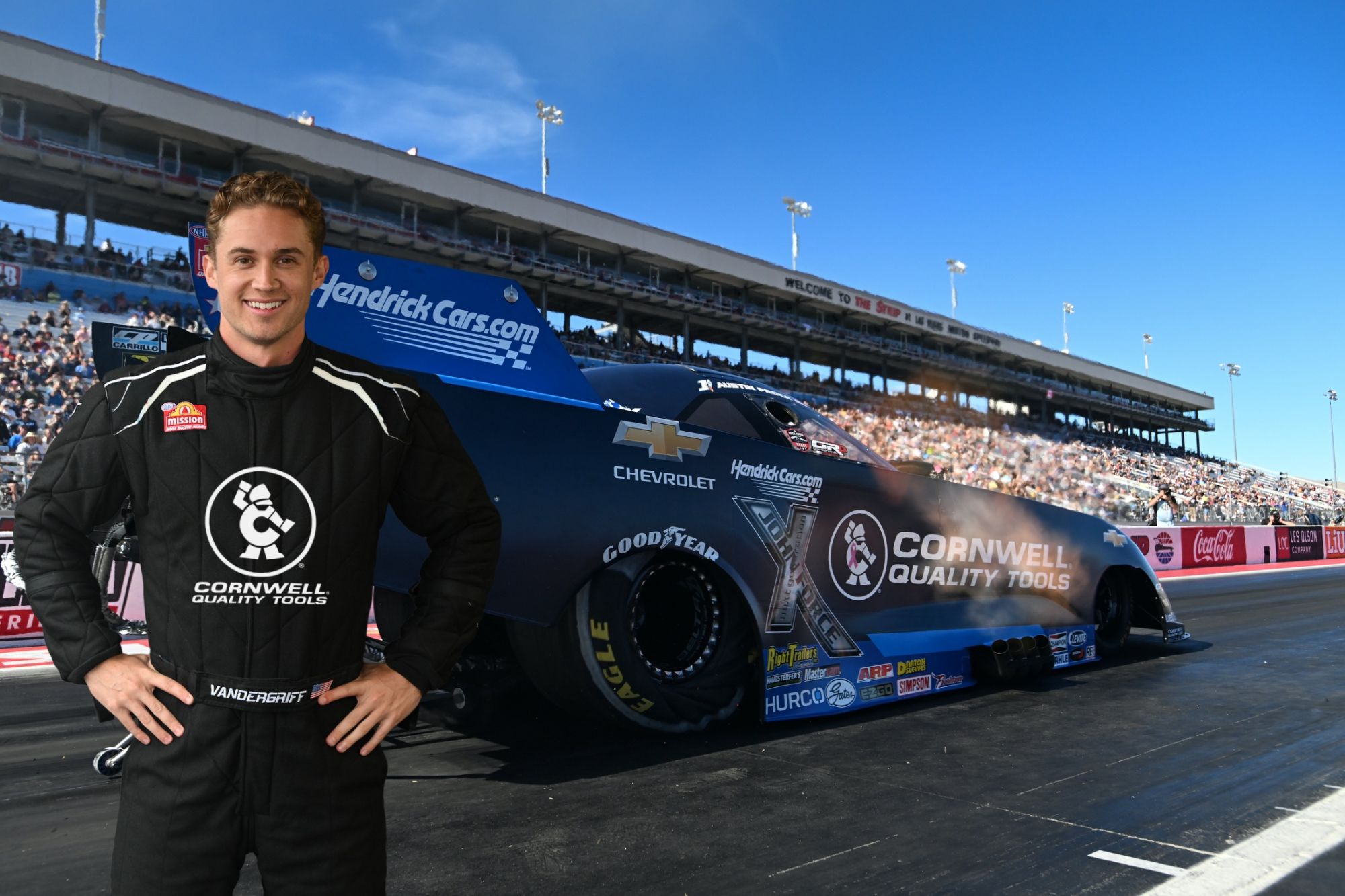
Drag racing rising star Jordan Vandergriff has been named as the driver of John Force Racing’s Cornwell Tools Chevrolet SS Funny Car for the 2026 NHRA Mission Foods Drag Racing Series season.
The announcement was made Friday at the NHRA booth during Day 2 of the Performance Racing Industry (PRI) Trade Show at the Indiana Convention Center in Indianapolis.
“This is a dream come true to have the opportunity not only with John Force Racing, the premier team in NHRA Drag Racing, but to drive the Cornwell Tools Chevrolet Funny Car for the greatest Funny Car driver of all time,” said Vandergriff. “As a kid growing up in the sport, you look at John and you see the greatness he’s portrayed, so the fact that I get to drive a Funny Car for him is amazing.”
The California native had two NHRA starts in 2025, driving in relief of injured Top Fuel driver Shawn Reed at Brainerd and Indianapolis. In the 11 Top Fuel races of his rookie season in 2019, Vandergriff earned a runner-up finish at Dallas and two other semi-final showings. He has served as an NHRA on FOX reporter the past two seasons.
“I think the transition to Funny Car is going to be fine. I’ve proven that I can drive the Top Fuel car well and the Funny Car presents a new fun challenge. It’s a shorter wheelbase and a lot more violent but I did some test hits in 2024 in John’s car and, ever since, I’ve had to itch to drive these cars.”
Cornwell Quality Tools began its partnership with John Force Racing in 2019 and has steadily expanded its presence. They have been the primary sponsor of the Funny Car program the past two seasons and held the primary position on Brittany Force’s Top Fuel dragster team at the 2025 U.S. Nationals when she set the national speed record of 343.51 mph. Cornwell Quality Tools is also the Official Professional Tools of NHRA.
“We are incredibly excited about today’s announcement from John Force Racing and to welcome Jordan Vandergriff to the Cornwell Tools Funny Car program,” said Cornwell Quality Tools CEO Bob Studenic. “Jordan is a dynamic talent with the skill, professionalism, and competitive fire that align perfectly with Cornwell’s values and our commitment to excellence.
“With more than 810 hardworking, USA-based Cornwell dealers representing our brand coast to coast, this partnership is bigger than racing—it’s a celebration of the drive, integrity, and craftsmanship that define who we are. Our dealers, employees, and customers have helped build Cornwell Tools into a championship-caliber organization, and we look forward to standing beside Jordan and the entire JFR team as we chase even greater success in the year ahead.
“This is an exciting moment for Cornwell Tools. We’re proud to continue our longstanding relationship with John Force Racing, and we can’t wait for our dealers to experience another season of world-class competition with the Cornwell Tools Funny Car.”
“I have a great relationship with Cornwell Quality Tools and I’m super happy they decided to pick me,” said Vandergriff. “They’re such a quality brand and they’ve done so much in the world of NHRA Drag Racing. I’m excited that I get to help their dealers sell tools and celebrate race wins together!”
John Force Racing’s full 2026 lineup will include 2012 Funny Car Champion Jack Beckman, Alexis DeJoria and Vandergriff in Funny Car and Josh Hart in Top Fuel.
“We’re proud to announce Jordan Vandergriff as the driver of the Cornwell Quality Tools Chevrolet SS Funny Car for John Force Racing,” John Force said. “We worked closely with the folks at Cornwell Tools to make sure we had the right fit for their program. Jordan did a great job when he tested with us a couple of years ago but we didn’t have a place for him at the time. Now that we have all of our drivers in place, we can focus 100 percent on preparing our cars and teams for the 2026 season.”
Veteran crew chief Chris Cunningham will move to the Cornwell Tools team from John Force Racing’s Peak Antifreeze and Coolant Funny Car with 2012 Funny Car Champion Jack Beckman. Cunningham has been a key part of John Force Racing in various positions since 2016.
“This is the opportunity I’ve been working towards. I’ve always wanted to run a full season and compete for a championship,” said Vandergriff. “I want the chance to run with the best and prove that I can be one of the best. This car has won two championships in a row, and Cunningham has so much experience. I have great respect for what he’s done in the sport, and I’m honored that I get to work with him.”
Further announcements from John Force Racing will be made in the coming weeks.
This story was originally published on December 12, 2025. 

Motorsports
Nascar legal saga ends as 23XI, Front Row secure settlement

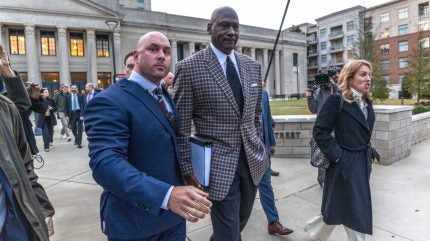
Motor racing’s Nascar series has reached a settlement with its 23XI and Front Row Motorsports teams with which it has been embroiled in a long-term legal feud over antitrust concerns surrounding stock car racing.
Front Row Motorsports and 23XI (co-owned by NBA icon Michael Jordan) accused Nascar of monopolistic practices relating to its revenue-sharing “charter” model, introduced in 2016 and renewed in 2024, through which the pair claimed Nascar worked to prevent competition.

Discover B2B Marketing That Performs
Combine business intelligence and editorial excellence to reach engaged professionals across 36 leading media platforms.
Find out more
The settlement, financial terms of which will remain confidential, has ended the case, with a number of notable concessions that could change the landscape of Nascar for the future.
Both 23XI and Front Row Motorsport have regained their charters, three each, which were suspended amid the court proceedings.
Furthermore, the 36 charters of all 15 Nascar teams will now become ‘evergreen’, effectively making them permanent rather than expiring, and those teams now have an increased say in the governance of the series, and crucially, an increased share in the series’ overall revenue.
The teams have, reportedly, already been made aware of these changes in a Thursday meeting, with the new rules to be implemented at a later date.
Also reinstated is the three-strike rule, now expanded to five strikes, which allows teams to flag complaints with Nascar rule changes and, if a team were to reach that three (now five) strike threshold, they could depart to race for a rival stock car series.
The decision came after both plaintiffs rested their case after eight days of court in Charlotte, North Carolina.
Following the conclusion of the case, Bob Jenkins, owner of the Front Row Motorsports team, commented: “After more than 20 years in this sport, today gives me real confidence in where we’re headed.
“It was clear we needed a system that treated our teams, drivers, and sponsors fairly and kept the competition strong. With this change, we can finally build long-term value and have a real voice in Nascar’s future.”
In a separate statement, Nascar chief executive and chair Jim France added: “This outcome gives all parties the flexibility and confidence to continue delivering unforgettable racing moments for our fans, which has always been our highest priority since the sport was founded in 1948.
“We worked closely with race teams and tracks to create the Nascar charter system in 2016, and it has proven invaluable to their operations and to the quality of racing across the Cup Series. Today’s agreement reaffirms our commitment to preserving and enhancing that value, ensuring our fans continue to enjoy the very best of stock car racing for generations to come.”
The next season of Nascar will begin on February 15, 2026, with the iconic Daytona 500 race.
Motorsports
Sunoco to sponsor No. 8 Ganassi Honda IndyCar in multi-year deal

Sunoco is making its return to the NTT INDYCAR SERIES as a full-time primary partner with Chip Ganassi Racing on the No. 8 Honda driven by Kyffin Simpson beginning in 2026. The multi-year agreement marks Sunoco’s first full-season primary partnership in INDYCAR since 1973.
Sunoco, the largest independent fuel distributor in the Americas, previously served as the primary fuel supplier of INDYCAR from 2010-2018 and the Indianapolis Motor Speedway from 2015-2018. The company’s new commitment to the Fastest Racing on Earth signals a powerful reentry into top-tier open-wheel racing and a notable partnership with one of motorsport’s winningest teams.
Notes of Interest:
Returning to American Open-Wheel Racing: With the deal, Sunoco returns to the INDYCAR SERIES with a full season team primary partnership for the first time in 53 years. Sunoco’s relationship with INDYCAR goes back to 1968 in Riverside, California, when Mark Donohue drove the No. 12 Sunoco Eagle. Donohue and Sunoco won their first Indianapolis 500 four years later. Its INDYCAR roster also includes Gary Bettenhausen, Tony Kanaan, NASCAR legend Bobby Allison and current INDYCAR on FOX personality Townsend Bell.
Simpson Behind the Wheel: Kyffin Simpson is one of the young talents in the sport, completing two full INDYCAR seasons before his 21st birthday – which is more starts than Chip Ganassi Racing champions Scott Dixon, Alex Palou, Jimmy Vasser or Alex Zanardi had by their 21st birthdays. The 2025 season marked a significant step forward for the Caymanian, scoring his first career podium, three top-5 finishes, six top-10s and his first trip to the Firestone Fast Six. He will look to take another leap forward, fighting for wins in 2026 and continue learning from his teammates that share a combined 10 INDYCAR championships and two Indianapolis 500 victories.
A Trusted Fuel Brand: The largest manufacturer of race fuels, Dallas-based Sunoco will use the partnership to showcase Sunoco 94 Octane, the highest-octane fuel on the market. As a Top Tier™ fuel, it can help engines run cleaner, longer and more efficiently. Beyond INDYCAR, Sunoco remains a dominant force in American motorsports, supplying high-performance fuel to more than 500 tracks and over 50 racing series nationwide.
A Championship Pairing: Sunoco joins Chip Ganassi Racing after one of the most successful seasons for a team in INDYCAR history. Combining for nine wins, six poles and 17 podiums with Dixon, Palou and Simpson, the team won both the Indianapolis 500 and the INDYCAR championship. Since its founding in 1990, CGR has won 17 INDYCAR championships, tied for most all-time, and over 145 INDYCAR races. Sunoco will have a presence across all Chip Ganassi Racing INDYCAR entries for all 17 races.
Chip Ganassi, Owner, Chip Ganassi Racing:“Sunoco has long been synonymous with performance and innovation, values that mirror the DNA of our team. To join forces with such an iconic brand and one with a storied legacy in INDYCAR is truly special. This partnership reflects our shared drive to keep pushing boundaries, and we look forward to what we’ll accomplish together on and off the track.”
Kyffin Simpson, Driver, No. 8 Sunoco Chip Ganassi Racing Honda: “Starting my third year in INDYCAR with Sunoco joining the No. 8 Honda is an incredible boost. We’ve made big strides on the track, and this partnership will only help us get better, I’m confident we can take another step forward and have even more success in 2026 and beyond.”
Motorsports
NHRA Releases National Event Category Schedule For 2026
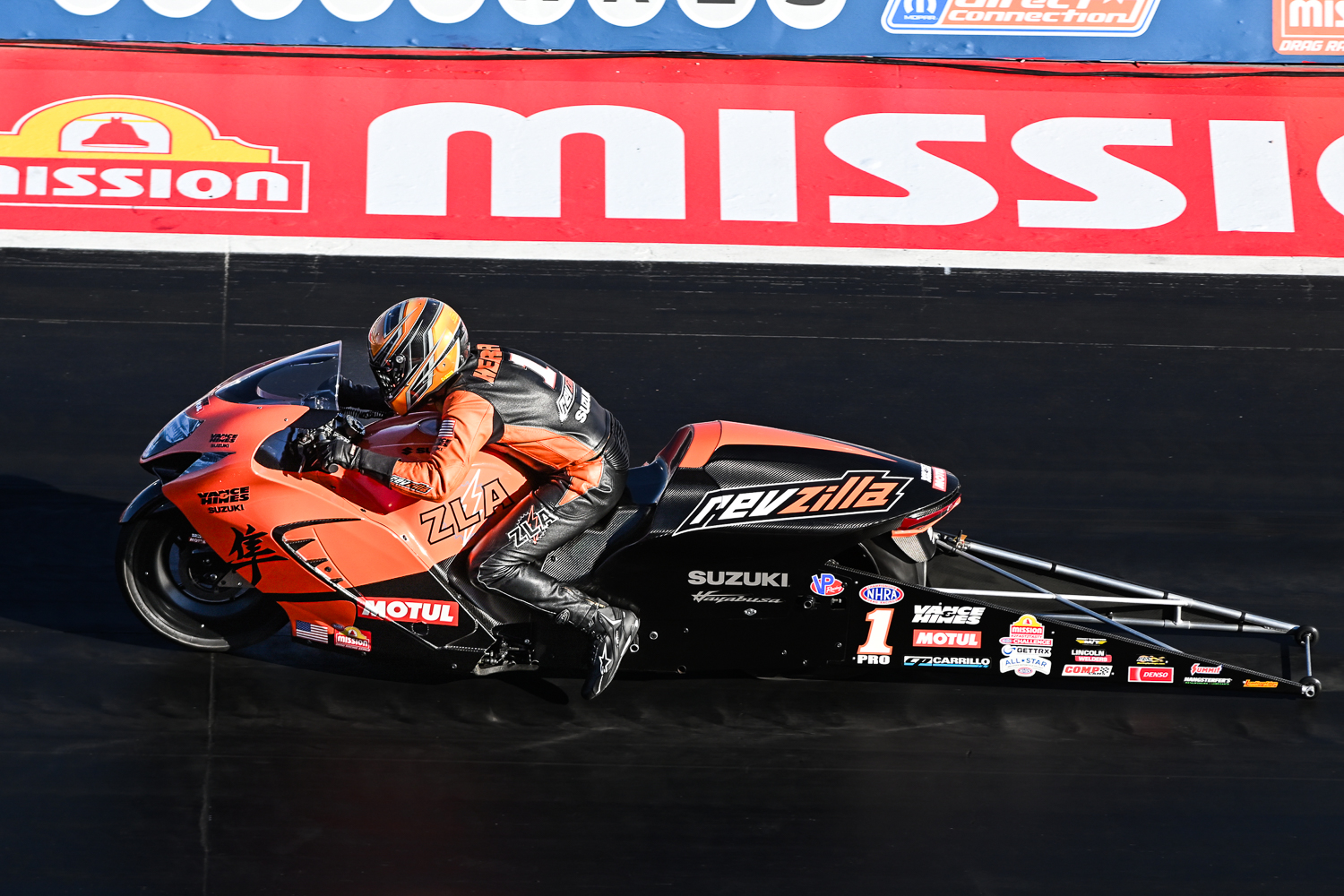

The NHRA has announced the full Mission Foods Drag Racing Series national event category schedule and a series of purse increases for the 2026 Lucas Oil Drag Racing Series, outlining a wide-ranging competition lineup as the sanctioning body enters its 75th anniversary season.
The schedule details every sportsman and professional category set to compete at NHRA Mission Foods Drag Racing Series national events during the commemorative campaign. Alongside the calendar, NHRA confirmed nearly a 15 percent increase in national-event purse payouts for Lucas Oil Drag Racing Series racers, as well as a 33 percent boost to regional championship purses for Top Alcohol Dragster and Top Alcohol Funny Car competitors in each NHRA division. New logos for all seven NHRA divisions were also unveiled.
The milestone season will open with the 57th annual NHRA Gatornationals, March 5–8, at Gainesville Raceway. Top Fuel, Funny Car, and Pro Stock are scheduled to compete at all 20 national events, while Pro Stock Motorcycle will appear at 15 events in 2025.

Top Alcohol Dragster and Top Alcohol Funny Car will contest 13 national events in 2026, highlighted by a national-event debut at Maryland International Raceway. Competition Eliminator will race at 15 events, while Super Stock, Stock, and Super Gas will each appear at 19 national events, including first-time national events at South Georgia Motorsports Park and Rockingham Dragway.
Super Street will compete at seven national events, while Top Dragster and Top Sportsman are both slated for 16 appearances. In the Mission Foods Drag Racing Series, all four professional categories will again compete at every Countdown to the Championship playoff event. All-Star Callout races will return, with Top Fuel in Gainesville, Funny Car in Indianapolis, Pro Stock in Norwalk, and Pro Stock Motorcycle in Sonoma. The Mission Foods #2Fast2Tasty NHRA Challenge will also return for 13 regular-season events.
NHRA also released the 2026 Super Stock and Stock class specialty race schedule, with events planned at Gainesville, No Problem Raceway, Firebird Raceway, Beech Bend Raceway Park, Brainerd International Raceway, Indianapolis, Famoso Dragstrip, and Maple Grove Raceway.
Motorsports
Rick Hendrick comments after the NASCAR lawsuit settlement

23XI Racing and Front Row Motorsports have settled their lawsuit with NASCAR
23XI Racing and Front Row Motorsports were in court, suing NASCAR for alleged anti competitive practices. On Thursday, the two sides agreed to a settlement.
The two teams will receive an undisclosed amount. 23XI and FRM will now have their charters returned.
NASCAR lawsuit settled; Comments from both sides
In turn, all charter holders will have the option to sign an updated charter agreement. Evergreen charters have entered the agreement, making the charter system permanent.
This is something that all teams were looking for during the negotiations, years ago. NASCAR has just agreed to give it to them.
Rick Hendrick, owner of Hendrick Motorsports is pleased that it’s over with…
Rick Hendrick comments
“Millions of loyal NASCAR fans and thousands of hardworking people rely on our industry, and today’s resolution allows all of us to focus on what truly matters – the future of the sport,” Rick Hendrick stated.
“For more than 40 years, NASCAR racing has been my passion. I believe deeply in what we can accomplish when we work together.”
“This moment presents an important opportunity to strengthen our relationships and recommit ourselves to building a collaborative and prosperous future for all stakeholders. I’m incredibly optimistic about what’s ahead.”
Hendrick concluded, “When our industry is united, there’s no limit to how far we can go or how much we can grow the sport we love.”
Hendrick Motorsports lost $20M despite 2 NASCAR championships
Links
NASCAR | Hendrick Motorsports | 23XI Racing | Front Row Motorsports
Motorsports
Charlotte Motor Speedway sells land near NASCAR track to Hendrick Motorsports
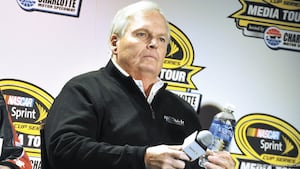
Hendrick Motorsports has made another significant land purchase in Concord.
ALSO READ: NASCAR settles federal antitrust case
Late last month, an entity tied to Hendrick bought a 20.2-acre site at 7001 Bruton Smith Blvd. for $14.2 million, according to Cabarrus County real estate records. The site was acquired from Charlotte Motor Speedway LLC, which is affiliated with racetrack owner Speedway Motorsports.
Read more at Charlotte Business Journal’s website here.
VIDEO: NASCAR settles federal antitrust case
-

 Rec Sports3 weeks ago
Rec Sports3 weeks agoFirst Tee Winter Registration is open
-

 Rec Sports2 weeks ago
Rec Sports2 weeks agoFargo girl, 13, dies after collapsing during school basketball game – Grand Forks Herald
-

 Motorsports3 weeks ago
Motorsports3 weeks agoCPG Brands Like Allegra Are Betting on F1 for the First Time
-

 Motorsports3 weeks ago
Motorsports3 weeks agoF1 Las Vegas: Verstappen win, Norris and Piastri DQ tighten 2025 title fight
-

 Sports3 weeks ago
Sports3 weeks agoTwo Pro Volleyball Leagues Serve Up Plans for Minnesota Teams
-

 Sports2 weeks ago
Sports2 weeks agoUtah State Announces 2025-26 Indoor Track & Field Schedule
-

 Sports3 weeks ago
Sports3 weeks agoSycamores unveil 2026 track and field schedule
-

 Motorsports2 weeks ago
Motorsports2 weeks agoRedemption Means First Pro Stock World Championship for Dallas Glenn
-

 Motorsports2 weeks ago
Motorsports2 weeks agoJo Shimoda Undergoes Back Surgery
-

 Rec Sports2 weeks ago
Rec Sports2 weeks agoRobert “Bobby” Lewis Hardin, 56


























